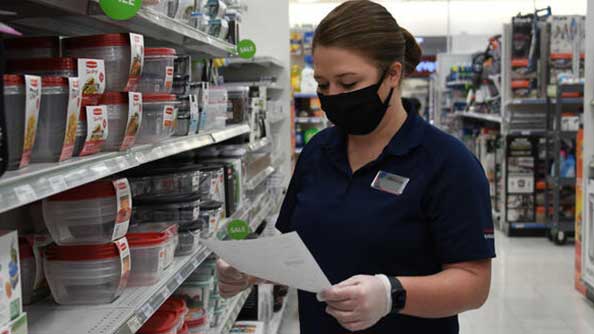Offering a variety of options to get items to customers is good business, but keeping everything in one place might not be the best idea. With the goal of saving money and consolidating inventory, many stores are turning to in-store fulfillment. The practice has its drawbacks.
Disrupting the in-store shopping experience
With the possibility of in-store fulfillment pickup or delivery available from many stores, someone needs to gather and pack up all the items and have them ready for the customer. That means some employees will be taking items from shelves instead of adding stock to shelves.
This can create several problems and disrupt a customer’s in-store shopping experience.
- Whose job is it: What happens when a customer sees an employee and asks a question? Can that employee step away from fulfillment duties to answer the question? Seeing employees on the sales floor who are not working for in-store customers can be confusing.
- Coveted items: A customer and fulfilling employee both want the last container of a specialty item. Who gets it?
- Clogging aisles: In these days of physical distancing, keeping the in-store shopping experience as easy as possible is key. Nobody wants to clog or bump into people in the aisles.
- Finding items: An in-store inventory system might say an item is in stock, but a customer may have taken that item for purchase and the technology hasn’t had a chance to update yet. Fruitless searches waste employee time and can frustrate customers when an item is not available.
These kinds of situations can force stores to find a balance between digital and in-store shoppers without alienating either one.
Training and retraining
Hiring and retaining quality employees is important to any business. Taking an employee away from one duty and training them to do another takes time and can decrease productivity.
Sending an employee out on to a sales floor to find a particular item could take a while, especially if it isn’t where it should be. Even if an inventory system says an item exists, customers tend to move things around making an item difficult to find.
Also, it isn’t as easy as it seems to simply take items off of shelves and put them in a box for shipment. Employees need to know how to pack delicate items, so they don’t break during delivery. Learning this skill requires training and procedures.
Stores need to have both packing supplies and dedicated space for packing and shipping. Retail space can be expensive, so taking up valuable footage for organizing shipments might not be cost-effective.
Solutions
There are ways to do in-store fulfillment while minimizing disruptions both to in-store customers and employees.
- Limit locations: Instead of offering services like curbside pickup at all stores, pick certain locations. This can streamline training and disruptions to in-store customers.
- Select services: Allow someone to buy online and pick up in store, but not ship to home from a store. This would eliminate the need for packing and shipping areas.
- Restrict hours: Only fulfill online orders during off-peak hours when employees would not be competing with in-store customers for product, clogging aisles, or confusing customers.
Fulfillment does not need to be an all-or-nothing proposition. Aero Fulfillment can streamline your fulfillment needs, simplifying everything while saving your company time and money while improving delivery time.
Since 1986, Aero has been the right choice for many businesses to make their fulfillment more effective, more efficient, and easier to manage. Contact a representative today to get started.
See if Aero Fulfillment Services is the right fit for you by taking this 1-minute survey.

